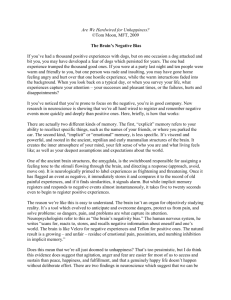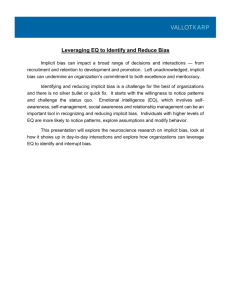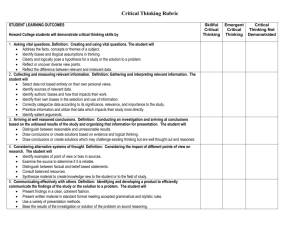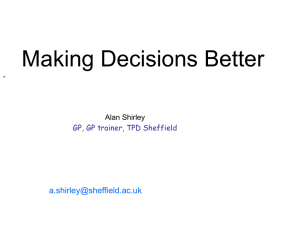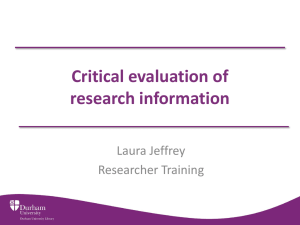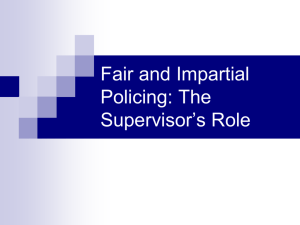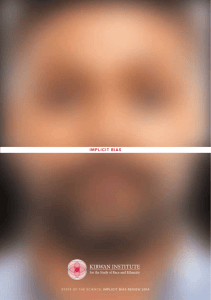Math lesson plan 2014 Project Implicit
advertisement
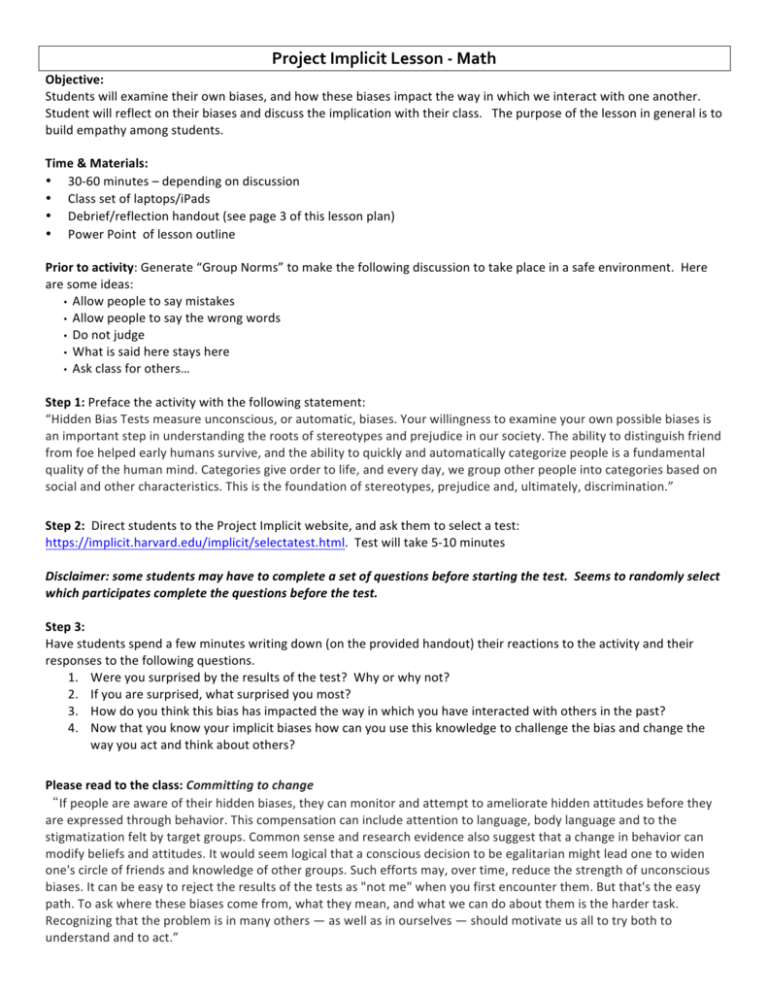
Project Implicit Lesson -­‐ Math Objective: Students will examine their own biases, and how these biases impact the way in which we interact with one another. Student will reflect on their biases and discuss the implication with their class. The purpose of the lesson in general is to build empathy among students. Time & Materials: • 30-­‐60 minutes – depending on discussion • Class set of laptops/iPads • Debrief/reflection handout (see page 3 of this lesson plan) • Power Point of lesson outline Prior to activity: Generate “Group Norms” to make the following discussion to take place in a safe environment. Here are some ideas: • Allow people to say mistakes • Allow people to say the wrong words • Do not judge • What is said here stays here • Ask class for others… Step 1: Preface the activity with the following statement: “Hidden Bias Tests measure unconscious, or automatic, biases. Your willingness to examine your own possible biases is an important step in understanding the roots of stereotypes and prejudice in our society. The ability to distinguish friend from foe helped early humans survive, and the ability to quickly and automatically categorize people is a fundamental quality of the human mind. Categories give order to life, and every day, we group other people into categories based on social and other characteristics. This is the foundation of stereotypes, prejudice and, ultimately, discrimination.” Step 2: Direct students to the Project Implicit website, and ask them to select a test: https://implicit.harvard.edu/implicit/selectatest.html. Test will take 5-­‐10 minutes Disclaimer: some students may have to complete a set of questions before starting the test. Seems to randomly select which participates complete the questions before the test. Step 3: Have students spend a few minutes writing down (on the provided handout) their reactions to the activity and their responses to the following questions. 1. Were you surprised by the results of the test? Why or why not? 2. If you are surprised, what surprised you most? 3. How do you think this bias has impacted the way in which you have interacted with others in the past? 4. Now that you know your implicit biases how can you use this knowledge to challenge the bias and change the way you act and think about others? Please read to the class: Committing to change “If people are aware of their hidden biases, they can monitor and attempt to ameliorate hidden attitudes before they are expressed through behavior. This compensation can include attention to language, body language and to the stigmatization felt by target groups. Common sense and research evidence also suggest that a change in behavior can modify beliefs and attitudes. It would seem logical that a conscious decision to be egalitarian might lead one to widen one's circle of friends and knowledge of other groups. Such efforts may, over time, reduce the strength of unconscious biases. It can be easy to reject the results of the tests as "not me" when you first encounter them. But that's the easy path. To ask where these biases come from, what they mean, and what we can do about them is the harder task. Recognizing that the problem is in many others — as well as in ourselves — should motivate us all to try both to understand and to act.” Step 4 (optional): Partner/small group share -­‐ 3-­‐5 minutes Students can share their reflections with the small group. Ask groups to brainstorm two ways this information can help improve/change the way they will interact with others in our community. Step 5 (optional): large group share Ask small groups to share what was discussed if they feel comfortable. Generate a class list of how this information can help improve/change the way they will interact with others in our community. Student Reflection – Project Implicit Please answer the following questions once you have complete a Project Implicit test. 1. Were you surprised by the results of the test? Why or why not? 2. If you are surprised, what surprised you most? 3. How do you think this bias has impacted the way in which you have interacted with others in the past? 4. Now that you know your implicit biases how can you use this knowledge to challenge the bias and change the way you act and think about others? Student Reflection – Project Implicit Please answer the following questions once you have complete a Project Implicit test. 1. Were you surprised by the results of the test? Why or why not? 2. If you are surprised, what surprised you most? 3. How do you think this bias has impacted the way in which you have interacted with others in the past? 4. Now that you know your implicit biases how can you use this knowledge to challenge the bias and change the way you act and think about others?
